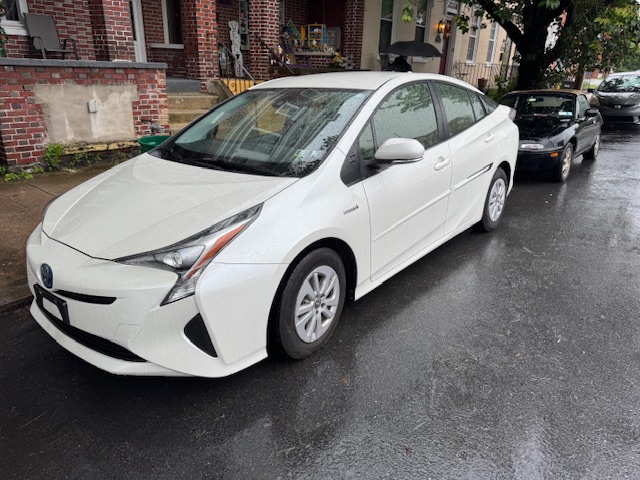I wrote this article at the request of David Mills of the Pittsburgh Post-Gazette. It was never published. I wrote the article after reading Tribe by Sebastian Junger. That book confirmed for me that while it seems my life is devoted to thrill seeking, it was really a life of looking for my tribe. The thrill seeking was part of the tribes I joined: tank commander, soldier, missile technician, and bicycle racer. The tribe was the point. Thrills and 41 broken bones were part of my tribal membership.
A friend sent me an article about a 42-year-old guy who crashed his mountain bike in a volcano and consequently decided to throttle back his thrill seeking. I smiled and thought ‘So young!’ Half of the forty-one bones I have broken were cracked, crunched or splintered since my 40th birthday. One vast difference between the reformed thrill junkie Gary and me is that I don’t remember my accidents, but he has a vivid memory of his big crash into the volcano. When he contemplates the next adrenaline adventure he can see his crash in his mind. I have no such hindrance.
My most recent big crash, at age 54, happened so fast I have no memory of it. In fact, I have little memory of the half year that followed. I was in a downhill race on a long, steep winding descent. I started at the back of a dozen riders and, according to the other riders, I was just about to pass the racer in front when we touched wheels. I flipped into the air and landed headfirst at 50 mph. My seventh vertebra was smashed. The first and second vertebra were cracked. My forehead peeled up to my hairline. Four ribs, my right collarbone, shoulder, and nose were broken.
Surgeons reattached my forehead and replaced my seventh vertebra with a bone from a cadaver. Three months later, the doctor cleared me to take off the neck and chest brace I’d been wearing to stabilize my neck. The next day, I rode down that same hill I’d crashed on with two of my riding buddies who were in the pack when I crashed. They were worried for me. I was fine. No memory. They told me they could see the crash clearly in their minds. Two other guys who had seen my crash had already decided to quit racing. I returned to racing, but only intermittently.
Two weeks after I took off the neck and chest brace, I re-enlisted in the Army after 23 years as a civilian. I was, as noted, 54 years old. Soon after, I had deployment orders for Iraq. At the time I re-enlisted, I had four kids and a wife and a good job and a racing team, but three of the kids were in or on the way to college and if I did not re-enlist as soon as I could, I would age out. So I raised my right hand and went from central Pennsylvania to southern Iraq.
I spent most of 2009 at Camp Adder, Iraq, serving as an Army Sergeant in a Combat Aviation Brigade. During that deployment, I flew to several bases across southern Iraq in Blackhawk and Chinook helicopters, once in a blackout sandstorm. I had plenty of thrilling moments on that deployment, but thrills were not why I re-enlisted. What I really wanted, I recently learned (and could admit to myself), was to have a mission that mattered and to be part of a group of soldiers risking their lives for each other and that mission.
As I learned from reading Sebastian Junger’s book Tribe: On Homecoming and Belonging, a tribe was what I wanted. The thrills would follow, but my squad, my platoon, my company—my tribe was what I really wanted. I missed being a tank commander with my own crew. I got my tribe in Iraq. I stayed in the National Guard until May 2016 when I aged out. During that summer, soldiers who said Bill Clinton, a draft dodger, should never have been President, became avid Trump supporters. Now that I was a civilian, my Army tribe evaporated faster than spilled water on an Iraq road in July.
But in November, my new tribe materialized. A former coworker said I should join a protest group in Philadelphia called Tuesdays with Toomey. They planned to protest Senator Pat Toomey every week until he held a town hall meeting in Philadelphia. We rallied in front of Toomey’s office every Tuesday, rain, shine or snow until January 3, 2023, when he left office. He never held the town hall.
In February 2022, just after Russia invaded Ukraine, another friend who served in the Peace Corps in Ukraine told me how I could volunteer to send medical supplies to Ukraine. I did that until November 2022, then have been going to Congress three times a year to ask for aid.
My tribe is now those who support Ukraine against Russia and those who support Israel against every form of Jihad. I have friends who have volunteered in Ukraine delivering medical supplies. I thought about going, but I know from deploying fifteen years ago that young people look at 50-year-olds as fragile. I had to be very fit so as not to be suspect. At my current age, I would just be a worry to people half my age. The same is true for Israel. I will work with my tribe here in the United States and, as with the deployment, the thrills will be part of the journey.










